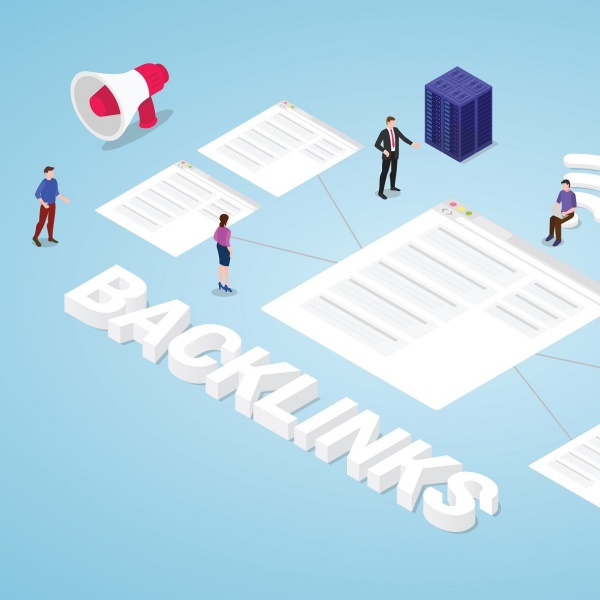
As Artificial Intelligence (AI) and voice search technology continue to evolve, new ways of searching for information online are being created every day. 50% of the U.S. population already uses voice search technology on a daily basis, and that number is only expected to grow.
Answer Engine Optimization (AEO) has emerged as a critical component of search engine marketing (SEM). Unlike Search Engine Optimization (SEO), AEO specifically focuses on optimizing content for AI-powered platforms like voice assistants and answer engines. With the increasing prevalence of AI and voice search, understanding AEO is becoming indispensable for digital marketing agencies and businesses alike.
What Is An Answer Engine?
Unlike traditional search engines that list web pages in response to search queries, answer engines provide direct, concise responses to search queries. 57% of users now perform zero-click searches. This eliminates the need for users to click on links to receive information.
This paradigm shift is fueled by recent advancements in voice search and artificial intelligence, that are enabling engines to understand and respond to questions with specific answers, often in a conversational manner.
How Answer Engines Process Search Queries
Artificial Intelligence plays a pivotal role in the functionality of answer engines. Through machine learning, AI allows these systems to interpret the intent behind a user’s question. Initially, answer engines will use natural language procession (NLP) to decipher the search query’s meaning and context. It then searches its database, which often includes structured data marked up for easy interpretation, to find the most accurate and relevant answer.
For example, when a user asks a voice assistant like Siri, “What’s the temperature today?,” the AI analyzes the query’s context and responds with a specific weather forecast rather than a list of websites about the weather.
Answer engines are transforming the way we seek information online. By providing direct responses to queries, they streamline the user experience and make search queries more efficient and user-friendly.
What Are The Main Types of Answer Engines?
Answer engines can be broken down into two general types: AI-powered voice search assistants, and generative AI chatbots.
Voice Search Assistants
Voice search is on the rise and will soon dominate the way people use search engines. 36% of Americans 18 and older own and use smart speakers that include voice search technology.
Voice Search Assistants like Google Assistant, Siri, and Alexa have transformed how we seek information. Voice assistants use a combination of voice recognition software, natural language processing, and machine learning algorithms to assess a given voice search. The voice assistant will then answer the query using text-to-speech (TTS) technology. The ability for users to receive direct answers from a voice search is quickly paving the way for answer engines to overtake traditional search engine methods.
Generative AI ChatBots
The other main type of answer engine is fueled by generative AI chatbots. Unlike voice assistants, these are often text-based and found on websites or in customer service applications. Users input a query and the AI chatbots use advanced algorithms to analyze vast amounts of data across the internet to respond to user search queries.
OpenAI’s ChatGPT and Google’s Bard are two prime examples of generative AI chatbots. The main difference between ChatGPT and Bard is that Bard pulls its data directly from the web, whereas ChatGPT does not. ChatGPT currently provides more comprehensive answers to search queries, while Bard provides more up-to-date research.
Voice search assistants and generative AI have the power to shift the entire search engine optimization industry. Both types of answer engines, whether voice-driven or text-based, highlight SEO’s growing reliance on AI to provide accurate, immediate answers to user queries.
What’s The Difference Between AEO and SEO?
The main goal of answer engine optimization is to provide the most accurate response to a given search query, whereas the main goal of search engine optimization is to increase a given website’s organic search traffic across a variety of keywords and search queries.
AEO vs. SEO
There are a few main differences between AEO and SEO. We’ve already mentioned that the main focus for AEO is to provide a single answer to a search query, whereas SEO aims to increase a website’s ranking on the search engine results page (SERP).
AEO and SEO also differ in the type of content each needs to succeed. Answer engine optimization requires content that focuses on providing quick, straightforward answers that can be used in formats like featured snippets and responses to voice searches. Search engine optimization campaigns will likely include a myriad of content such as blogs and videos.
For instance, if someone searched for, “healthy breakfast options for babies,” a well-optimized SEO article would cover various breakfast options at length, incorporating detailed diet plans. However, content for AEO would simply provide a few healthy breakfast options for babies to answer the query.
Lastly, AEO and SEO will focus on different keywords to be effective. SEO campaigns might include large categories of keywords that range from short-tail keywords, to long-tail keywords. AEO utilizes a more targeted approach when it comes to keywords. AEO seeks to match the user’s intent by focusing on long-tail, question-based keywords.
How Do I Maximize Answer Engine Optimization?
Optimizing content for voice search, using proper keywords, and building credibility are all ways to boost answer engine optimization. Every strategy will vary, but following these principles will give your brand the edge in answer engine optimization.
Optimizing Content for Voice Search
The first step in optimizing for AEO is to create content that directly addresses user queries. This means understanding the intent behind search queries and providing clear, concise answers.
For instance, a blog post about healthy recipes can be structured to answer specific questions like “What are easy-to-make healthy dinner recipes?” By formatting content in a question-and-answer format, it becomes easier for answer engines to extract and provide these answers to users. The key is to anticipate the types of questions that potential customers might ask and tailor the content to respond to these inquiries directly.
Keyword Research for AEO
Answer engine optimizations target long-tail, conversational keywords that will either be used in a voice search format, or written and submitted to generative AI applications like ChatGPT. In either case, those building AEO marketing campaigns can use keyword research tools like Semrush and Ahrefs to discover long-tail keywords in the form of questions to optimize their campaigns for answer engines.
Building Credibility
One of the most impactful ways to improve answer engine optimization is to create comprehensive “About” and “FAQ” pages. Answer engines typically like to source content that is created by reputable sources. About Us and FAQ pages that provide lots of background information give context and trustworthy expertise to the content being submitted to answer engines, thereby increasing the likelihood of that content being pulled for a query.
The Future of AEO
With the growing reliance on generative AI and voice search, AEO is quickly becoming an integral part of search engine marketing. Businesses will need to include AEO in their organic search strategies and stay informed about the quickly evolving technology in today’s digital marketing world.
However, SEO is still an essential tool for any successful marketing campaign. It’s important to leverage both AEO and SEO to experience the best results. If your business needs guidance to implement an effective AEO and SEO campaign, reach out to Noble House Media today.












